#Jomon Period
Text
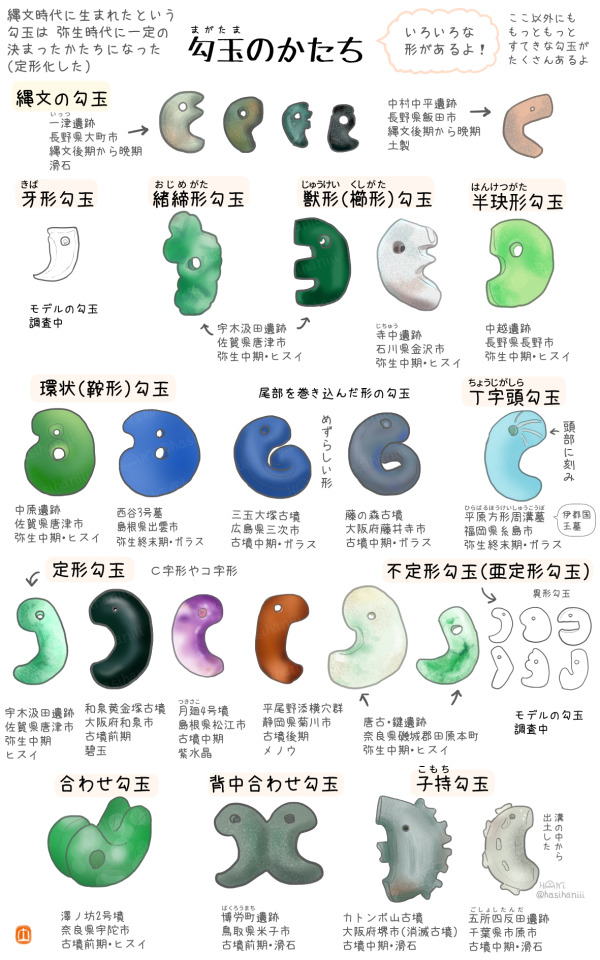

Magatama beads collection, great chart put together by author Hasihaniii. Those beads are probably familiar to all Tears of the Kindom players or Inuyasha fans ;)
Those comma shaped beads where used in prehistoric Japan, from Jômon to Yayoi and Kofun periods.
Nobody knows exactly what they were supposed to represent (a fang? a fetus? the moon? something else entirely?). We're simply certain that overtime, they became ritual objects - important enough that one is part of the 3 sacred treasures of Imperial Japan.
I wont translate the chart as it mainly details the shapes, periods, and locations where those artefacts where found :) It's great to see all the different shapes different places/eras came up with. I am especially partial to the weirdly-adorable-animal-looking Komochimagatama 子持勾玉!
#japan#history#magatama#comma shaped beads#prehistoric#jomon period#yayoi period#kofun period#zelda totk#tears of the kingdom#inuyasha
709 notes
·
View notes
Text

Ornamented pottery in the "Fire Flame" style, dating to the Middle Jomon period (ca. 2500-1500 BCE). Found at Sasayama, Niigata Prefecture, Japan; now in the Tokyo National Museum.
#art#art history#ancient art#prehistoric art#prehistory#Japan#Japanese art#East Asia#East Asian art#Jomon#Jomon period#pottery#ceramics#Tokyo National Museum
599 notes
·
View notes
Text




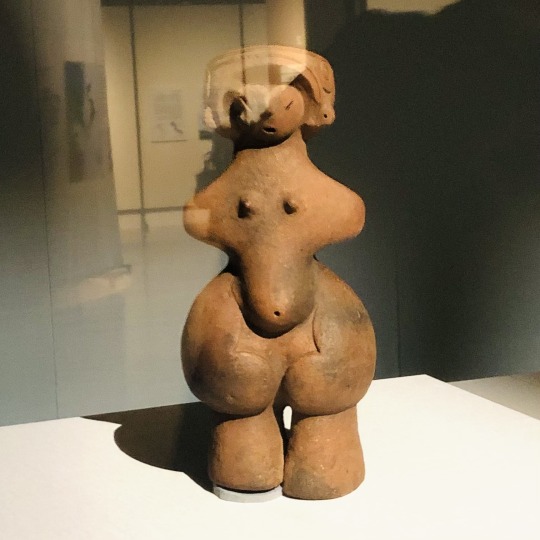



Dogu
遮光器土偶
北海道博物館
2023
22 notes
·
View notes
Text

Hey, I didn't know that Japan had their own Dalek called "dogu".
#ace attorney#ace attorney spirit of justice#gyakuten saiban 6#doctor who#daleks#dogu#dogu statue#jomon period#ancient japan#japan
6 notes
·
View notes
Text
Japan
Japan is a fascinating country that has a rich history, culture, and society. It is an archipelago located in the Pacific Ocean, comprising of four main islands and several smaller ones. Japan has a population of over 126 million people, making it the world’s 11th most populous country. The country has a unique identity that has been shaped by its geography, history, culture, and economy. This…

View On WordPress
#Azuchi-Momyama Period#Edo Period#Heian Period#Heisei Period#Jomon Period#Kamakura Period#Kofun Period#Meiji Period#Muromachi Period#Nara Period#Showa Period#Taisho Period#Yayoi Period
0 notes
Text
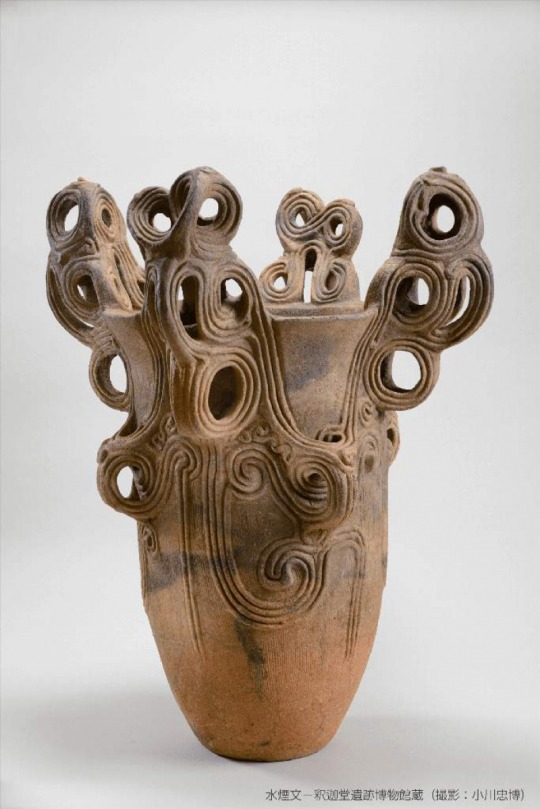
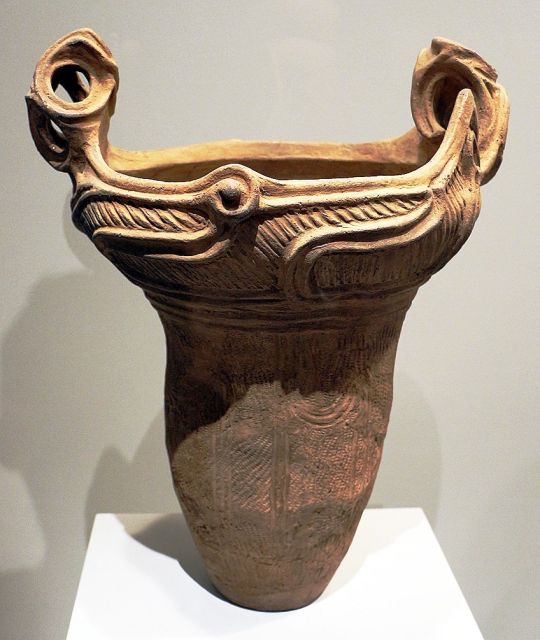
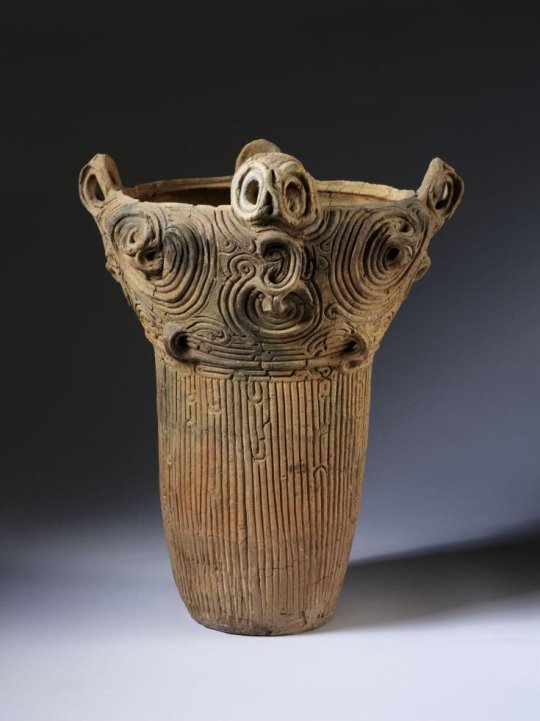

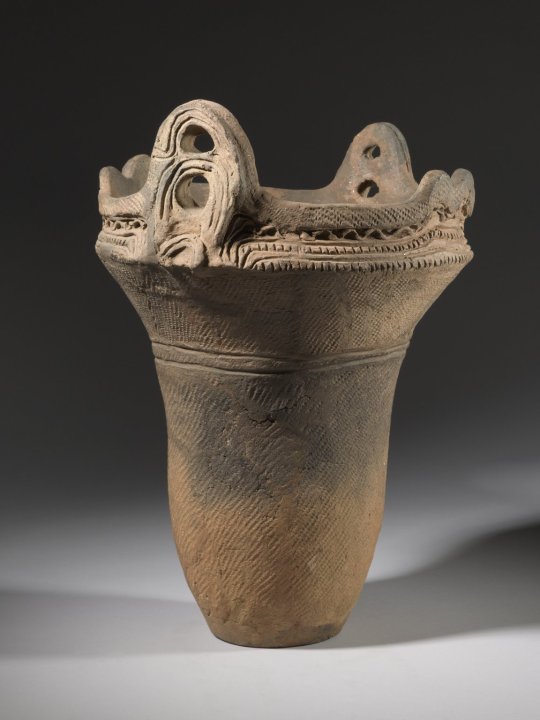
JŌMON POTTERY VESSELS ARE THE OLDEST IN THE WORLD..."
PIC INFO: Spotlight on a Neolithic Jomon vessel from Japan, c. Middle Jōmon Period (c. 3,500? - 2,500 BCE), designated National Important Cultural Properties in 1988.
MINI-OVERVIEW: "Jōmon pottery vessels are the oldest in the world. They are characterized by their decoration from impressions, which resemble rope. The word Jōmon means "cord markings" or "patterns."
Because the Jōmon period covered a great deal of time, the vessels themselves changed throughout the period.
THE ART OF EDUCATION (University)
Address: Fuefuki City Yamanashi
Category: Cultural Heritage/Japan Heritage
Source: https://jomon.co/en/point/detail/14, The Art of Education, Met Museum, Explore the Collections, Brooklyn Museum, various, etc...
#Japanese Pottery#Japanese#Pottery#Jakado Site#Japan#Ancient Japan#Ancient Japanese#Ancient Pottery#Ancient Cultures#Ancient Civilizations#Middle Jomon Period#Jōmon Culture#Middle Jōmon Period#Jōmon Vessel#Vessel#Jōmon Vessels#Jomon Pottery#Pottery Vessels#Jōmon Pottery#Jōmon#Jōmon Period#Vessels#Archeology#Japanese Neolithic Pottery#Jōmon Ware
3 notes
·
View notes
Text

Evolutionary process
#english#2024#process#april 15#american idol#donald trump#tax day#monkey#evolution#the Jomon period#modern person (people)#funny
1 note
·
View note
Text
:/
#ra speaks#personal#I’m not like. having a full panic attack meltdown.#but I just feel !!!!!! (evil version) for like the last two hours. my head hurts. I’m just spiraling.#I haven’t taken my anxiety meds in a while here’s hoping I can actually function tomorrow and get that presentation done#edit: yeah I needed to take a tranq put on a podcast abt the Jomon period and sim the lights#I’m gonna sleep well tonight
1 note
·
View note
Text
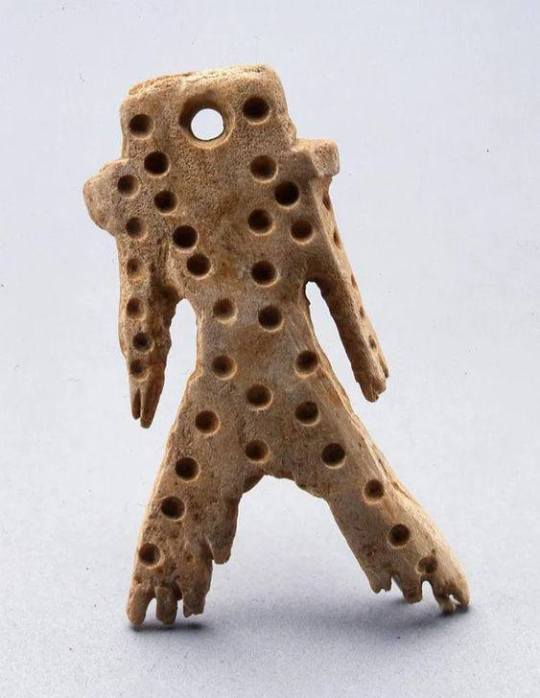
A Jomon period doll made from sika deer antler
(2,470–1,250 BCE)
2K notes
·
View notes
Text
just mixed up the yayoi and jomon periods. it's over for me
536 notes
·
View notes
Text
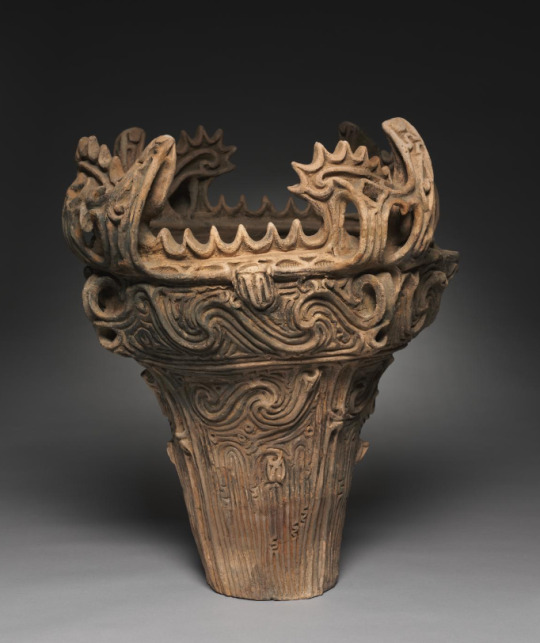
Earthenware vessel, Japan, Jomon Period, circa 2500 BC
from The Cleveland Museum of Art
257 notes
·
View notes
Text
youtube
(video in French only, sorry guys :S)
[À quoi ressemble la Préhistoire au Japon ?], super interesting interview of archeologist Linda Gilaizeau by Nota Bene about Prehistoric and ancient Japan periods.
She first details the actual history of archeology in Japan, then (31:45) surveys keys points of the Jomon, Yayoi and Kofun cultures, before (1:15:34) answering questions from the chat.
Whole talk was immensely useful as, as Linda stresses it herself, studies available mainstrean are sometimes still dated compared to what has been/is actually discovered nowadays! It's so neat to hear her talk about up to date research ^^
Linda Gilaizeau has a popularization channel (her twitter), I'll be sure to check her talks :D
#japan#history#video#archeology#Linda Gilaizeau#Nota Bene#prehistory#jomon period#yayoi period#kofun period#ressources#references#Youtube
33 notes
·
View notes
Photo

“Flame-Rimmed” Cooking Vessel (Kaen doki), Jomon period (ca. 10,500 B.C.–ca. 300 B.C.), Japan
452 notes
·
View notes
Photo

FUKABACHI: This deep jar is from the Middle Jomon period (2600-1500 B.C.E.). It was used for cooking. Since this jar was from the Middle Jomon Period, it is a prime example of the densely decorated, rope-patterned style of the period. It also has a flame-like style, a characteristic present in many other Jomon pots.
https://mma.pages.tufts.edu/fah188/ospina/jomon/index.html
331 notes
·
View notes
Text



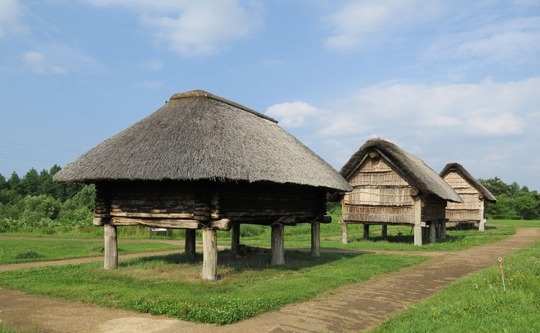
Sean bienvenidos, japonistasarqueologicos, al tercer capítulo del Japón prehistórico y seguir recorriendo sus lugares mitológicos y mágicos, una vez dicho esto póngase comandos que empezamos.
-
Para continuar nuestro viaje, más vale tarde que nunca, pero despacio y con buena letra. Nos trasladamos al yacimiento arqueológico de Sannai Maruyama en la prefectura de Aomori, localizada en la región de Tōhoku.
-
La estructura, de madera, data del periodo jomon, es una estructura que funcionó como un gran calendario, ya que algo común que tienen todas las culturas en el mundo es adorar a las estrellas en lo que respecta a la prehistoria. El yacimiento data del 3900 a.c localizado a lo largo del río Okidate en la punta de una suave colina que se extiende desde las montañas Hakkoda.
-
En la década de 1992, tuvieron lugar las excavaciones que han desenterrado los restos de viviendas en pozos, tumbas de adultos, niños y los pozos de almacenamiento, entre otros rastros de la vida cotidiana. Además de una hay una gran cantidad de herramientas de loza de piedra. Se han excavado una gran variedad de huesos de pescado y de animales que indican hábitos alimenticios de aquella gente, también fueron encontrados frutos secos: como castañas y nueces. Además, se han desenterrado muchas reliquias orgánicas, como productos de madera, herramientas de hueso, canastas tejidas, así como artículos comerciales como jade, obsidiana de áreas remotas y asfalto. Hay una teoría: en Iwate se crean estructuras similares para realizar la danza de los ciervos ¿Qué opinan al respecto?
_
Espero que os haya gustado y nos vemos en próximas publicaciones mis amantes del mundo japonés, que pasen una buena semana.
-
考古学者の日本主義者の皆さん、先史時代の日本の第 3 章へようこそ、神話と魔法の場所を旅し続けてください。 - 旅を続けるには、遅刻しないよりはマシですが、ゆっくりと上手な字で。 東北地方にある青森県の三内丸山遺跡へ移動します。 - この木造建造物は縄文時代にまで遡り、先史時代から世界のどの文化にも共通して星を崇拝しており、偉大な暦として機能していた建造物です。 この遺跡は、八甲田山系から続くなだらかな丘陵の先端、沖館川沿いに位置し、紀元前 3900 年に遡ります。 - 1992 年代に発掘調査が行われ、井戸内の住居跡、大人、子供の墓、貯蔵穴、その他の日常生活の痕跡が発掘されました。 1 つ以外にも多数の石器の道具があります。 当時の人々の食生活を示す魚や動物の骨が多数出土しており、栗やクルミなどの木の実も出土しています。 さらに、木製品、骨道具、編んだかごなどの有機遺物や、翡翠、辺境の黒曜石、アスファルトなどの交易品も発掘されています。 岩手でも鹿踊りをするために同じような建物が作られているという説がありますが、どう思いますか? _ 日本の世界を愛する皆さん、良い一週間をお過ごしください。
-
Welcome, archaeological Japanists, to the third chapter of prehistoric Japan and continue touring its mythological and magical places. Having said that, put yourself in command and let's begin.
-
To continue our journey, better late than never, but slowly and with good handwriting. We move to the Sannai Maruyama archaeological site in Aomori prefecture, located in the Tōhoku region.
-
The wooden structure dates back to the Jomon period, it is a structure that functioned as a great calendar, since something common that all cultures in the world have is worshiping the stars in regards to prehistory. The site dates back to 3900 BC located along the Okidate River at the tip of a gentle hill that extends from the Hakkoda Mountains.
-
In the 1992s, excavations took place that unearthed the remains of dwellings in wells, graves of adults, children and storage pits, among other traces of daily life. In addition to one there are a large number of stoneware tools. A wide variety of fish and animal bones have been excavated that indicate the eating habits of those people. Nuts such as chestnuts and walnuts were also found. In addition, many organic relics have been unearthed, such as wooden products, bone tools, woven baskets, as well as trade items such as jade, obsidian from remote areas, and asphalt. There is a theory: in Iwate similar structures are created to perform the deer dance. What do you think about it?
_
I hope you liked it and see you in future posts my lovers of the Japanese world, have a good week.
#日本#先史時代#地理#歴史#文化#考古学#縄文時代#天文学#記号学#更新世#エドワードSモース#日本の石器時代#ユネスコ#-#Japan#Prehistory#Geography#History#Culture#Archaeology#Jomon Period#Astronomy#Semiotics#Pleistocene#Edward S. Morse#Japanese Stone Age#UNESCO
47 notes
·
View notes
Text
Review: The Essence of Shinto

I have written before of Yamakage's authorship of multiple antisemitic conspiracy theory books. That said, given that there are not a lot of English language books about Shintō, I find this book is often recommended. It should not be recommended to anyone, not just because of the authorship, but for its misinformation. There is very little actual information that can be salvaged from this trainwreck of a book.
Koshintō is not an ancient practice - it's a new religious movement; an attempt to imagine an ancient Shintō, which is, in my opinion, inherently paradoxical, as the concept of Shintō as the name of a religion (and indeed the concept of a religion itself) were consciously constructed as recently as the Meiji Era, which is the 19th century. The archaeological and historical truth is that we do not know what Yayoi or Jomon period peoples believed, and Shintō is likely very distinct from that, and that is okay. While I understand the impulse to try to reconstruct Yayoi or Jomon era religions, I find the impulse to remove foreign elements like Buddhism to contain elements of xenophobia, and have found the idea of Shintō as truly ancient to be misleading at best. We do not actually have an ancient practice handed down to us. Japanese religious practice, first, is diverse -- regions do things differently. Kyushu area graves, for example, bear continental Chinese influence and have 土神 enshrined at their sides. Secondly, while I do think there is a necessity to undo the damage that State Shintō has done, it is not helpful to do so in a way that, at best, ignores and at worst, contradicts history.
Secondly, Yamakage Shintō is barely attested outside of Motohisa's writings. Many of the practices allegedly specific to Yamakage Shintō are common Japanese New Age theories, along with some condescension of traditional practices. One way to recognize this is his repeated use of the word "spiritual" (which presumably was either written スピリチュアル in the original text). It's ironic, then, that he puts down "bizarre cults and sects" (p.13). The aforementioned paragraph should explain why I am so skeptical of the Yamakage school when there is no such thing as ancient Shintō by definition.
Crucially, there is some dangerous and typical New Age medical misinformation here. He claims that certain chants or practices can heal different physical and mental health symptoms, which is not something anyone should say, much less someone who claims to be a religious teacher. This is a sidenote, but I am hoping that Paul de Leeuw did not absorb any of this, but am concerned as he trained under Yamakage.
Yamakage states "...Shinto leaders have been at the forefront of campaigns to restore the forests..." As much as Westerners want Shintō to be the Green Religion that saves the world, I've had very little luck actually encountering any shrine websites or articles that back this up, outside of the traditional practices of keeping very small sacred forests known as chinju no mori. If anything, the opposite has been documented. See Sacred Forests, Sacred Nation for more on this subject. I would be open to correction on this, but Yamakage provides no sources whatsoever; in fact, he provides no sources throughout his book for any of his factual or historical claims. Presenting the Showa Emperor as a source does nothing but reinforce fascist rhetoric about the emperor being the religious head, as he was at the time of State Shinto, and likely says more about his personal convictions than his religious ones. There is something eerily dystopian and fascistic in Yamakage's description of the people cheerily following the Showa Emperor's example.
I have noticed a tendency in some Japanese people to do what I think of as self-orientalism; an exoticization of your own body and culture to appeal to whites. It seems to me that Yamakage is doing such a thing, while simultaneously appealing to Japanese nationalistic sympathies, by saying it is an ancient, mysterious religion untainted by materialism. Demonizing materialism, in fact, goes against the actual practice of most Japanese -- many, many businesses regularly pray for prosperity and dedicate lamps to shrines, or will get ritual decorations for prosperity known as kumade during the November Tori-no-Ichi festival.
"Ajimarikan" is a chant that is, at best, shoddily derived from Buddhism, as is his use of mudra hand gestures. At worst, he completely fabricated this chant and doesn't even attempt to provide a meaning for this phrase. The Five Great Vowels Chant and the Heavenly Counting Chant are both chants that do not exist outside of this book.
Yamakage Motohisa also repeatedly uses Okinawan/Ryūkyūan religion as examples as if it is a part of Shintō, which it most decidedly is not. There was forced assimilation because of colonization, to my understanding, but the practice is entirely different from Shintō.
This is kind of a briefer overview than I originally intended, but I hope this provides some information on why I dislike Yamakage and this book so much. My hope is that he stops being recommended as any sort of resource and a better one is translated soon.
36 notes
·
View notes